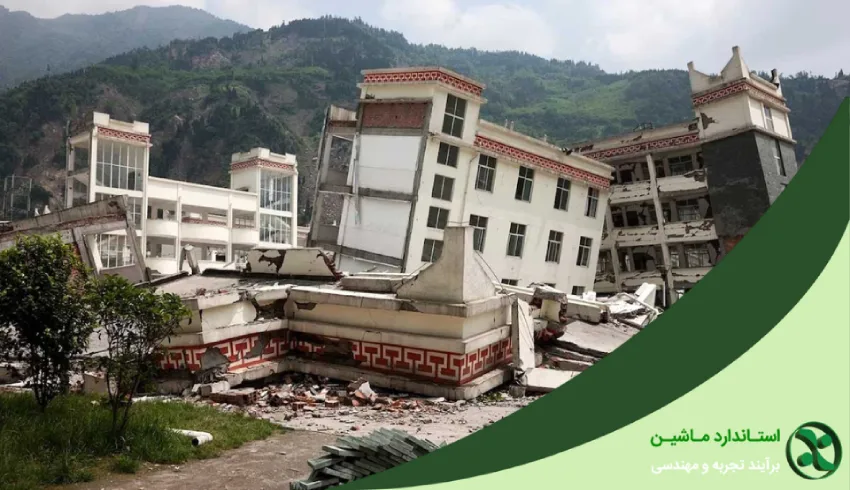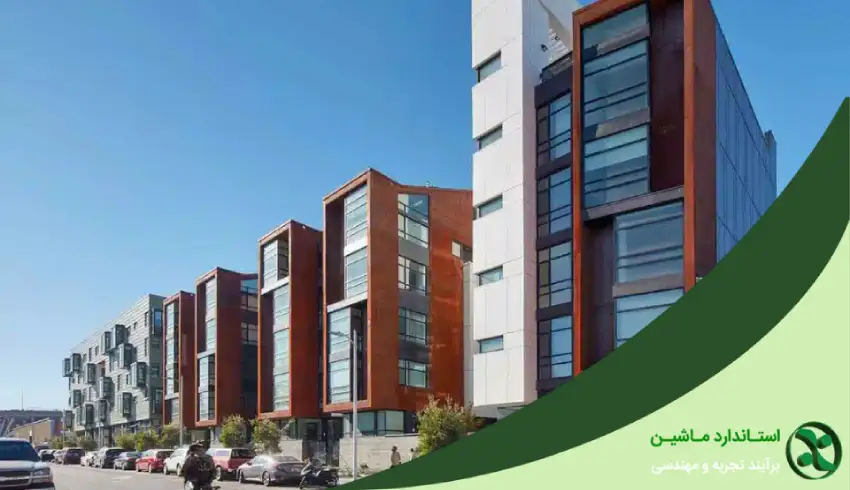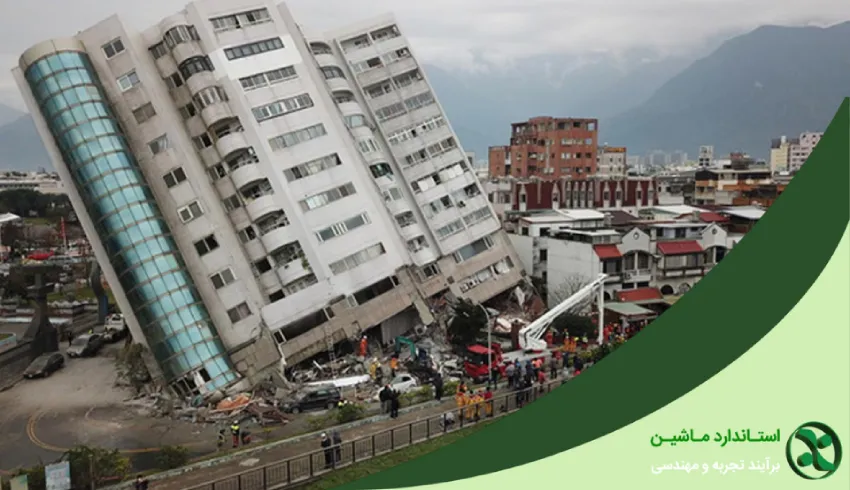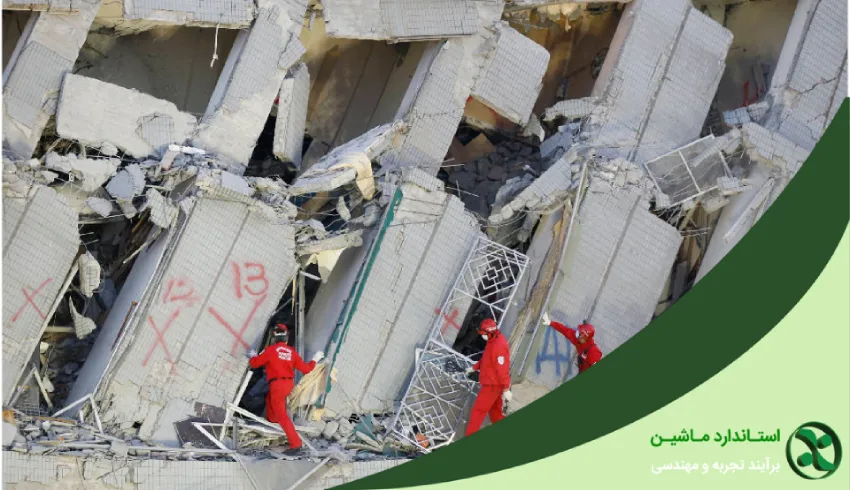Earthquake-resistant buildings are considered essential solutions aimed at reducing the damage caused by earthquakes in urban environments. These buildings are designed in a way that enables them to resist seismic forces and prevent severe damage to people and infrastructure. In this context, important information about the basic characteristics of earthquake-resistant buildings, the materials used, and methods for enhancing building resistance will be presented.
Importance of constructing earthquake-resistant buildings
Constructing earthquake-resistant buildings is of utmost importance as it helps preserve human lives, reduce financial losses, and increase the safety of structures. These buildings rely on resistant materials and modern techniques that prevent building collapse during earthquakes, which lowers reconstruction costs and emergency rescue operations. The following are the main reasons illustrating the importance of this type of building:
-
Reducing human casualties: Preventing building collapse and injuries.
-
Reducing financial losses: Preserving infrastructure and lowering rebuilding costs.
-
Increasing structural stability: Using flexible and strong materials against vibrations.
-
Protecting cultural heritage: Strengthening historical buildings against earthquakes.
-
Compliance with engineering standards: Adhering to safety regulations and reducing legal liabilities.
-
Increasing property market value: Attracting investments and lowering insurance costs.

Characteristics of earthquake-resistant buildings
Earthquake-resistant buildings must have features that enable them to resist seismic forces and prevent collapse. The most prominent characteristics include:
| Feature | Description |
|---|---|
| Engineered Design | Adherence to earthquake codes and construction standards. |
| Use of Resistant Materials | Reinforced concrete, steel, composites, and materials flexible against vibrations. |
| Strong Structural System | Use of steel frames, reinforced concrete, and strong braces. |
| Flexible Connections | Designing building joints capable of absorbing earthquake energy. |
| Seismic Base Isolators | Installing seismic isolators in foundations to reduce force transmission. |
| Symmetrical and Balanced Design | Avoiding asymmetrical structures causing stress concentration. |
| Energy Absorption Systems | Use of dampers (seismic) to reduce vibration intensity. |
| Structural Lightweighting | Reducing building weight by using light and strong materials. |
| Emergency Exits Provision | Designing escape staircases and earthquake-resistant doors. |
| Quality Control in Construction | Precise engineering supervision and adherence to safety standards. |
1. Proper engineering design
-
Symmetrical and balanced structure: Ensures equal distribution of earthquake forces across the structure.
-
Reducing building weight: Using lightweight and resistant materials to lessen seismic forces.
-
Controlling building height and number of floors: To prevent building overturn.
-
Using modern engineering systems: Such as suspended structures, seismic isolators, and dampers.
2. Earthquake-resistant materials
-
Fiber Reinforced Concrete (FRC): Resistant to cracking and stresses caused by vibrations. Advanced mixing systems (e.g., batching) can produce high-quality concrete.
-
Ductile Steel: Increases resistance to horizontal forces.
-
Fiber Reinforced Polymer (FRP) composites: Reduces weight and increases structural resistance.
-
Lightweight Autoclaved Aerated Concrete (AAC) blocks: Reduces building self-weight and increases resistance.
3. Energy absorption and dissipation systems
-
Seismic isolators: Reduce transmission of earthquake vibrations to the building.
-
Seismic dampers: Control oscillations and reduce vibration intensity.
-
Active and smart control systems: Using sensors to detect and respond to earthquakes.
4. Strong and flexible joints
-
Flexible bolted connections instead of brittle welding.
-
Smart joints that absorb earthquake energy without damaging the structure.
-
Reinforcing column-beam joints to prevent failure at element intersections.
5. Foundation reinforcement in earthquake-resistant buildings
-
Deep and wide foundations for better distribution of seismic forces.
-
Use of micropiles and resistant piles to increase foundation stiffness.
-
Injection of strengthening materials into soil to improve load-bearing capacity.
6. Flexible and ductile design
-
Ability to deform in a controlled manner without cracking or failure.
-
Use of modular structures to reduce destructive force transfer.
-
Independent floor movement to reduce damage caused by structural deformations.

Concrete structures in earthquake-resistant buildings
Concrete structures are commonly used in building earthquake-resistant facilities by using reinforced concrete to enhance strength and flexibility. The following features should be present:
-
Using high-strength reinforced concrete (C35 and above).
-
Incorporating FRP or steel fibers to reduce cracking and increase stiffness.
-
Proper distribution of longitudinal and transverse reinforcement.
-
Using closed and dense ties in columns to prevent shear failure.
-
Strong and flexible joints reinforced with steel plates or composites.
-
Symmetrical design and weight reduction using moment frames or shear walls.
-
Foundation reinforcement using deep columns and micropiles.
-
Employing energy absorption systems such as isolators and dampers.
Materials used in earthquake-resistant construction
-
Special concretes:
-
Fiber Reinforced Concrete (FRC).
-
Self-Consolidating Concrete (SCC).
-
Polymer concrete.
-
-
Earthquake-resistant steel:
-
High-strength low-alloy (HSLA) steel.
-
Ductile steel.
-
Composite reinforcement bars (FRP rebar).
-
-
FRP composites:
-
Carbon and glass fibers for strengthening columns and beams.
-
Fiber-reinforced polymer materials with high bending and shear resistance.
-
-
Isolators and dampers:
-
Rubber isolators to reduce force transmission.
-
Friction, viscous, and magnetic dampers.
-
-
Lightweight and strong materials:
-
AAC blocks.
-
Resistant timber structures (CLT).
-
Lightweight foam bricks.
-
-
Resistant glass:
-
Laminated and multi-layer glass.
-
Flexible glass with nano-polymers.
-
-
Flexible connections:
-
Flexible bolted joints.
-
Smart joint systems.
-

Methods to strengthen buildings
Strengthening buildings means taking measures to increase the strength, durability, and safety of buildings against external forces such as earthquakes, winds, and floods. The main methods include:
-
Strengthening concrete structures:
-
Adding reinforced concrete shear walls.
-
Jacketing columns and walls with reinforced concrete.
-
Using FRP fibers to strengthen structures.
-
-
Strengthening steel structures:
-
Adding steel braces.
-
Reinforcing column and beam connections.
-
Using energy dampers.
-
-
Strengthening building elements:
-
Injecting grout into cracks.
-
Installing horizontal and vertical reinforcement.
-
Using FRP or steel mesh.
-
-
Foundation improvement:
-
Expanding and deepening foundations.
-
Supporting with micropiles or piles.
-
Injecting strengthening materials into soil.
-
-
Advanced methods:
-
Installing various seismic isolators.
-
Active and semi-active control systems.
-
Nanotechnology and advanced composites.
-

Conclusion
Given the severity of earthquakes in many parts of the world, constructing earthquake-resistant buildings is an imperative necessity to preserve lives, reduce material losses, enhance structural security, and protect national wealth. Therefore, using modern technologies, advanced materials, and adhering to updated engineering standards are essential in building these structures.

